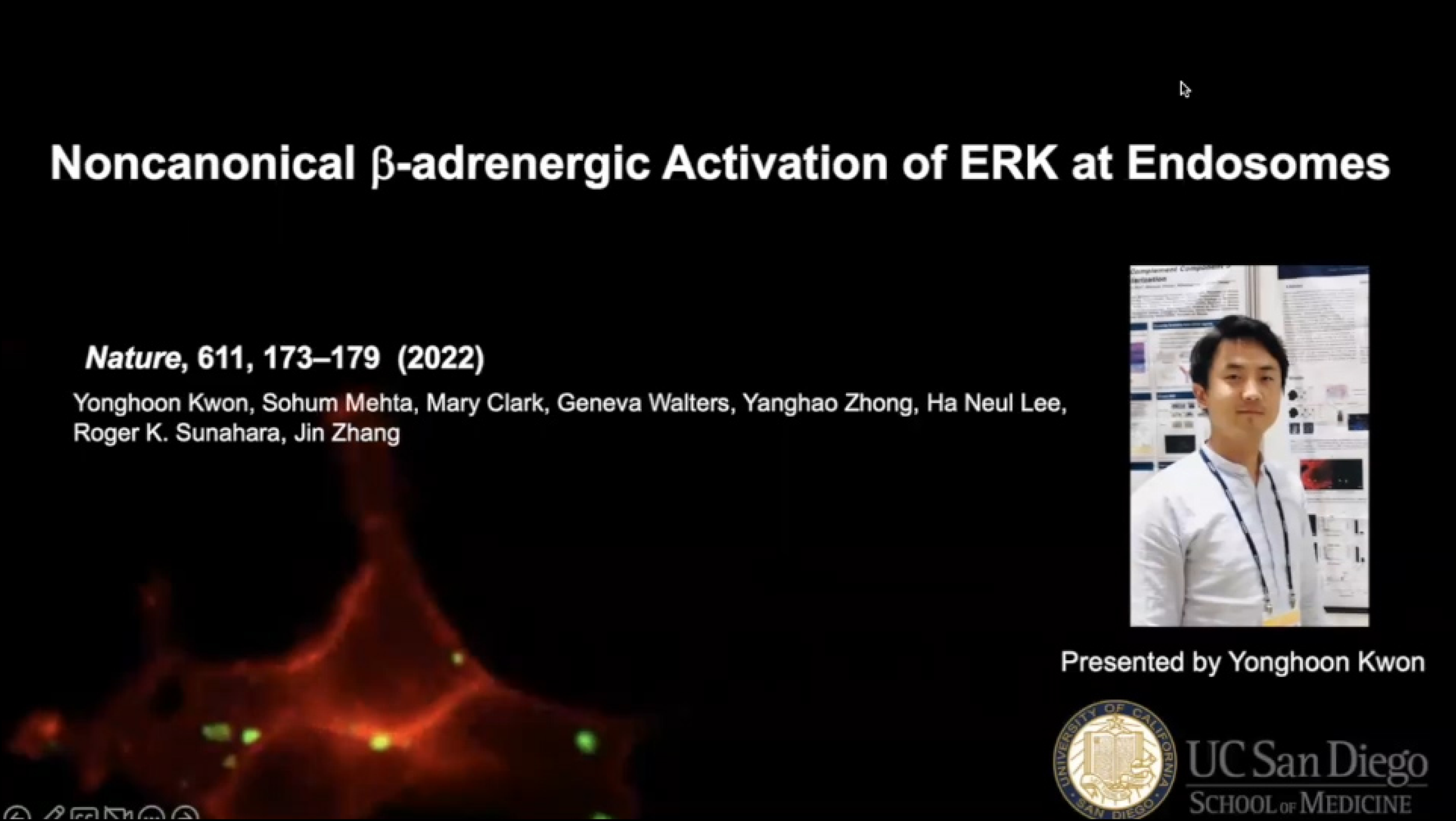Non-canonical β-adrenergic activation of ERK at endosomes
Yonghoon Kwon1, Sohum Mehta1, Mary Clark1, Geneva Walters1, Yanghao Zhong1, Ha Neul Lee1, Roger K Sunahara1, Jin Zhang2,3,4
- Department of Pharmacology, University of California, San Diego, La Jolla, CA, USA.
- Department of Pharmacology, University of California, San Diego, La Jolla, CA, USA. jzhang32@health.ucsd.edu.
- Department of Bioengineering, University of California, San Diego, La Jolla, CA, USA. jzhang32@health.ucsd.edu.
- Department of Chemistry and Biochemistry, University of California, San Diego, La Jolla, CA, USA. jzhang32@health.ucsd.edu.
Abstract
G-protein-coupled receptors (GPCRs), the largest family of signalling receptors, as well as important drug targets, are known to activate extracellular-signal-regulated kinase (ERK)-a master regulator of cell proliferation and survival1. However, the precise mechanisms that underlie GPCR-mediated ERK activation are not clearly understood2-4. Here we investigated how spatially organized β2-adrenergic receptor (β2AR) signalling controls ERK. Using subcellularly targeted ERK activity biosensors5, we show that β2AR signalling induces ERK activity at endosomes, but not at the plasma membrane. This pool of ERK activity depends on active, endosome-localized Gαs and requires ligand-stimulated β2AR endocytosis. We further identify an endosomally localized non-canonical signalling axis comprising Gαs, RAF and mitogen-activated protein kinase kinase, resulting in endosomal ERK activity that propagates into the nucleus. Selective inhibition of endosomal β2AR and Gαs signalling blunted nuclear ERK activity, MYC gene expression and cell proliferation. These results reveal a non-canonical mechanism for the spatial regulation of ERK through GPCR signalling and identify a functionally important endosomal signalling axis.
Presented By Yonghoon Kwon | ORCID iD

